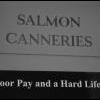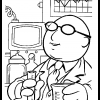Hello all, it's been a while but I though I'd pop in and revive the concept of "Mock Recall" and "Traceability/Mass Balance":
I STILL see MUCH confusion on the terms and a lack of consistency of language; so let us "calibrate" as it is VERY easy, in the ivory tower, to "orchestrate" Traceability , but when it comes to the "evidence", where the rubber hits the road: I'd like see were we are all at when it comes to Best Practices of what is and what is not a Traceability "exercise".
Forward Traceability (part of a Mock Recall) event: Identify a product, see what "batch" or "lot" it is in, find out where it all went.
- Number of units manufactured or ingredient used (lbs of material, ingredient, packaging) in recall “Lot”
- The quantities of affected product that each customer received (to site Shipping)
- Any write-offs or stock waste (set-outs) that occurred for the finished product.
- Any re-work (re-canning) was transformed into another finished product.
- Reconciliation summary/report of units:
- Manufactured product shipped
vs.
to units sold, and yet to be sent to customers.
- A summary that can explain the variances:
to waste/setouts.
to warehouse storage/Inventory.
VS.
Backwards Traceability event: Identify your source raw material (cans, lbs of raw material, tin, plastic film, etc), see where it went, explain the variances (yield, waste, theft, purchasing errors, etc).
EVIDENCE:
- Raw material supplier (supplier purchase source, ingredient, packaging)
- Relevant Inspection/Production records recording “lot(s)”
- Raw material receivable dates and quantities
- raw materials used and quantities
- Any waste generated (often recorded as “yield” or “recovery”)
- Work in progress identification to raw material batching:
- WIP inventory
o Yet to be shipped (not in "inventory")
Thoughts?



















